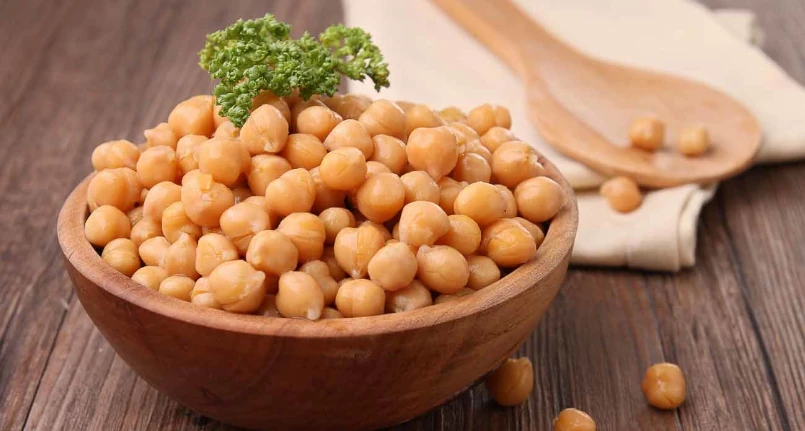Cooking legumes requires some special precautions which, if neglected, can compromise the nutritional integrity and the organoleptic and gustatory quality of the dish; it is a delicate cooking , to be carried out in plenty of water , over a low flame, prolonged over time and which subordinates to some equally important preparation steps.
Legumes and legumes
What and what are they?
In the kitchen, legumes are foods consisting of the seeds of some plants belonging to the Leguminosae or Papilionaceae family; similarly to cereals (seeds of the Poaceae or Gramineae – Gramineae ), legumes have a nutritional content which favors the supply of complex carbohydrates but, for their part, they bring more proteins , mineral salts , fibers and vitamins .
Legumes make up a wide range of plants; broom , capraggine, licorice , alfalfa , sweet clover , fenugreek , etc. are also Papilionaceae . However, the legumes to be cooked are limited to a group of varieties of which the seeds are consumed, therefore: cannellini beans , borlotti beans , Spanish beans , black beans, Mexican beans, chickpeas , cicerchie , lentils , broad beans , peas , soybeans , lupins , peanuts* etc.
Peanuts are not cooked like other legumes but simply toasted.
Before cooking legumes
As mentioned in the introduction, cooking legumes is a rather delicate operation that requires some special precautions. First of all, we remind you that legumes can be marketed in various forms: fresh (only in season), frozen , in jars (cooked and canned in the cooking liquid) or dried ( dehydrated ). Strictly speaking, those which best retain their nutritional value and organoleptic characteristics and taste are the fresh ones, followed by the frozen ones, then the dried ones and finally the jarred legumes. Obviously, cooking legumes is only necessary for the first three types, while pre-cooked seeds do not require any heat treatment; in parallel, the measures whose need we have already anticipated are to be applied EXCLUSIVELY to DRIED legumes , while fresh and frozen ones do not require their use. N.B. _ Frozen legumes, before cooking, must NOT be de-iced and brought to room temperature.
Before cooking dried legumes
We finally come to the treatment that precedes the cooking of dried legumes; these seeds, being dehydrated and packaged on a large scale, are not always completely free of processing waste (pod fragments, petiole, etc.), impurities (dust, stone fragments, etc.) or defects (atrophic, darkened, etc.). Therefore, the first stage of the treatment prior to cooking consists of the (more or less thorough) analysis of the seeds, and the separation of the unwanted components; this procedure, which can also be carried out dry, in order to reduce times, could be carried out at the same time as the second step, i.e. washing in running water. Washing legumes before soaking them is useful for eliminating dust, the first impurities and additives excess antifungals, microorganisms already present on the food, etc. We then come to the last phase of the treatment before cooking the dried legumes; these, which are obviously dehydrated to prolong their conservation, require the reacquisition of the liquids necessary for satisfactory cooking. The water inside the seed is therefore decisive for the success of the preparation, since the starch and soluble fibers contained inside the legumes, if not rehydrated (therefore gelled) and subjected directly to the heat of the thermal treatment, react by hardening further and making the food unpalatable. It can be deduced that it is ESSENTIAL to soak the legumes for the time necessary to rehydrate them ( osmosis) also based on the size and variety of the seed (a few hours or a whole night); for example, the soaking time of a (smaller) cannellini bean will always be less than that of a (much larger) Spanish bean. This does not mean that some dried legumes having small dimensions and a particularly permeable skin can be cooked regardless of the soaking mentioned above; lentils, peas and cicerchie are quite common examples. Furthermore, despite having properly selected and washed the legumes, when possible, it would be a good habit to replace the soaking water in order to reduce the inexorable bacterial fermentation . Other precautions are: use water at room temperature and in quantities of about 3 times its weight dried legumes (in the container the liquid must cover the seeds by at least 3 cm), choose the RIGHT water for soaking (generally low in salts and basically alkaline) and correct it with sodium bicarbonate (the tip of a teaspoon every kg of dried legumes) to facilitate the “breaking” of some intrinsic fibrous components and to give the seed softness during cooking.
How to do?
Let’s start by specifying that cooking the legumes is essential, since the heat treatment makes the seeds digestible and destroys some of their anti-nutritional components (a small exception can be made for fresh peas, pleasant and fairly digestible – but not entirely – even when raw) . On the other hand, cooking legumes also means losing part of their thermolabile vitamin content .
Once selected, washed and soaked, the legumes must cook lightly, for a long time and above all in COLD WATER (see the article: Types of cooking in water ). Let the reader not misunderstand; cooking in cold water is NOT a paradox or a futuristic culinary technique, but a simple play on words that indicates a very elementary type of treatment. It is done by placing the legumes in the pot containing the still cold water, then making them reach the temperature gradually. On the contrary, cooking in HOT water (like that of pastaor refined cereals, to be clear) provides for the immersion of the food in the liquid ALREADY brought to the boil. To cook legumes correctly it is therefore necessary to transmit the heat to them in the most delicate way possible and, to do this, it is necessary to use LIGHT BOILING or SUMMERING.
In short:
- Use a saucepan or a TALL earthenware pan with a THICK bottom, suitable for prolonged cooking
- Constantly maintain a temperature of about 80°C, identifiable by the release of a few sporadic bubbles
- Calculate the water required for cooking on the basis of double or triple the amount of legumes already found
- Use a lid, perhaps glass, so as not to have to continuously add the evaporated liquid
- Stir when needed.




